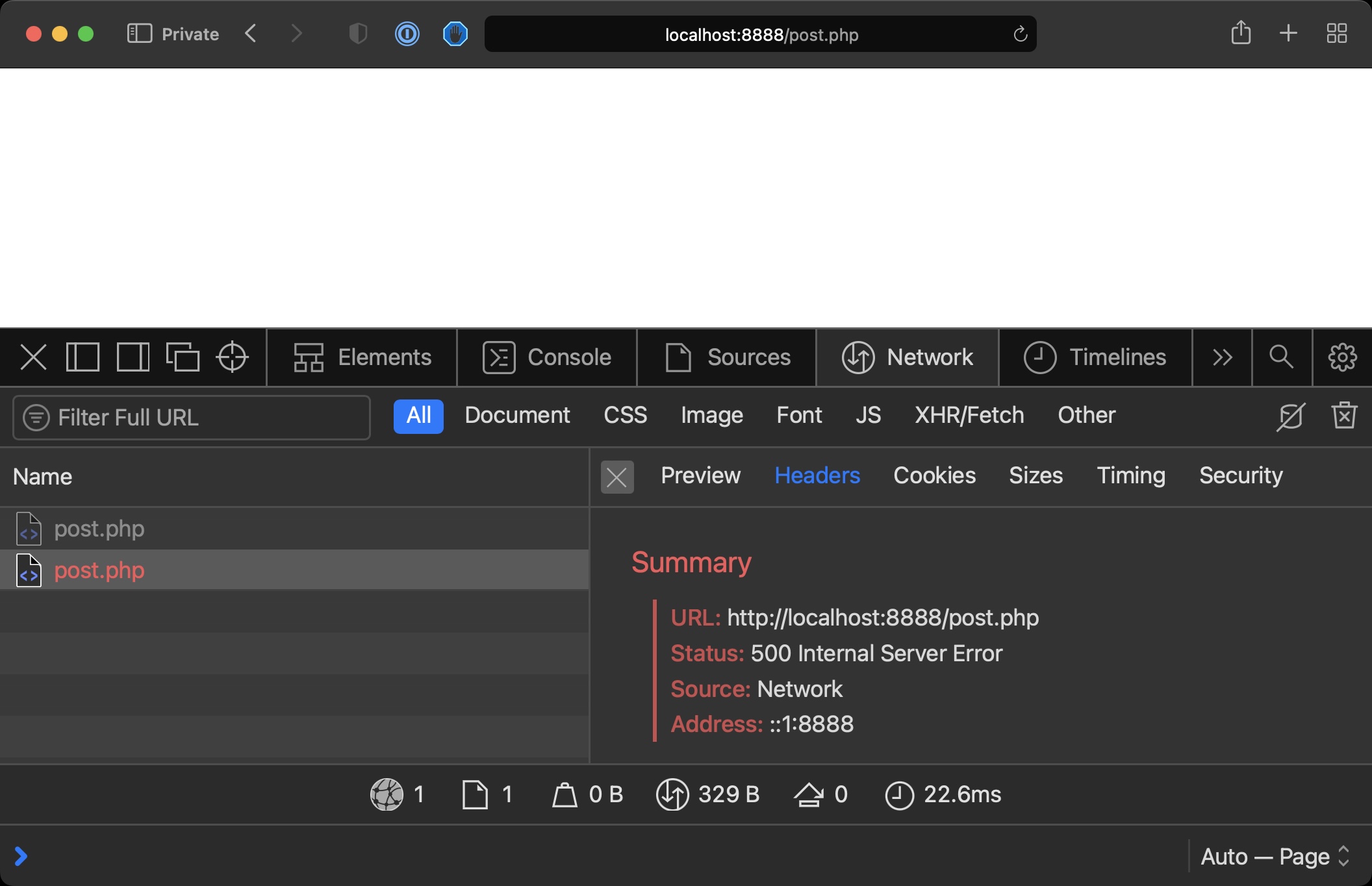How to use HTTP Headers in PHP
PHP lets us set the HTTP headers of a response through the header() function.
HTTP Headers are a way to send information back to the browser.
We can say the page generates a 500 Internal Server Error:
<?php
header('HTTP/1.1 500 Internal Server Error');
?>
Now you should see the status if you access the page with the Browser Developer Tools open:

We can set the content/type of a response:
header('Content-Type: text/json');
We can force a 301 redirect:
header('HTTP/1.1 301 Moved Permanently');
header('Location: https://flaviocopes.com');
We can use headers to say to the browser “cache this page”, “don’t cache this page”, and a lot more!
→ Get my PHP Handbook
→ I wrote 17 books to help you become a better developer:
- C Handbook
- Command Line Handbook
- CSS Handbook
- Express Handbook
- Git Cheat Sheet
- Go Handbook
- HTML Handbook
- JS Handbook
- Laravel Handbook
- Next.js Handbook
- Node.js Handbook
- PHP Handbook
- Python Handbook
- React Handbook
- SQL Handbook
- Svelte Handbook
- Swift Handbook
Also, JOIN MY CODING BOOTCAMP, an amazing cohort course that will be a huge step up in your coding career - covering React, Next.js - next edition February 2025